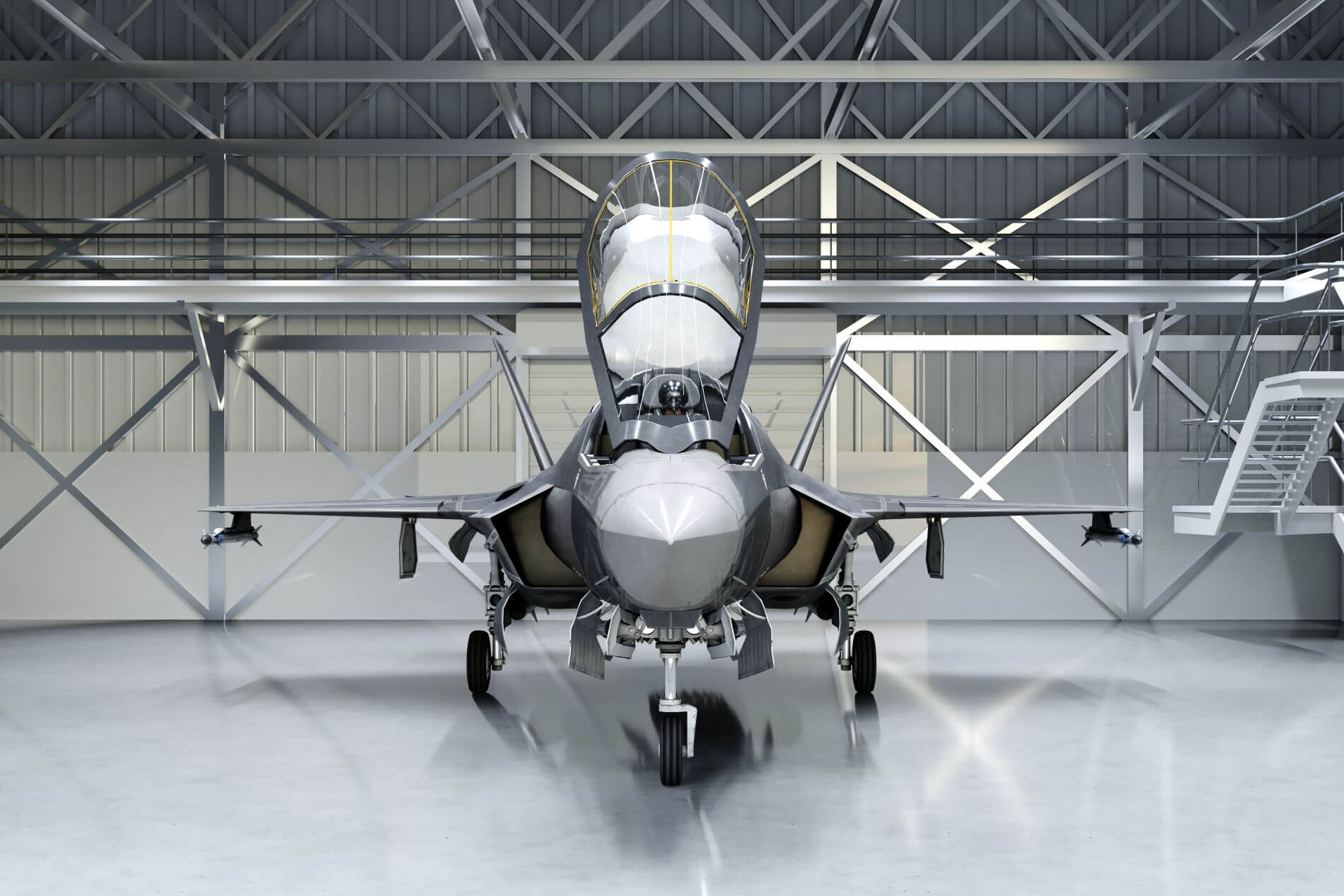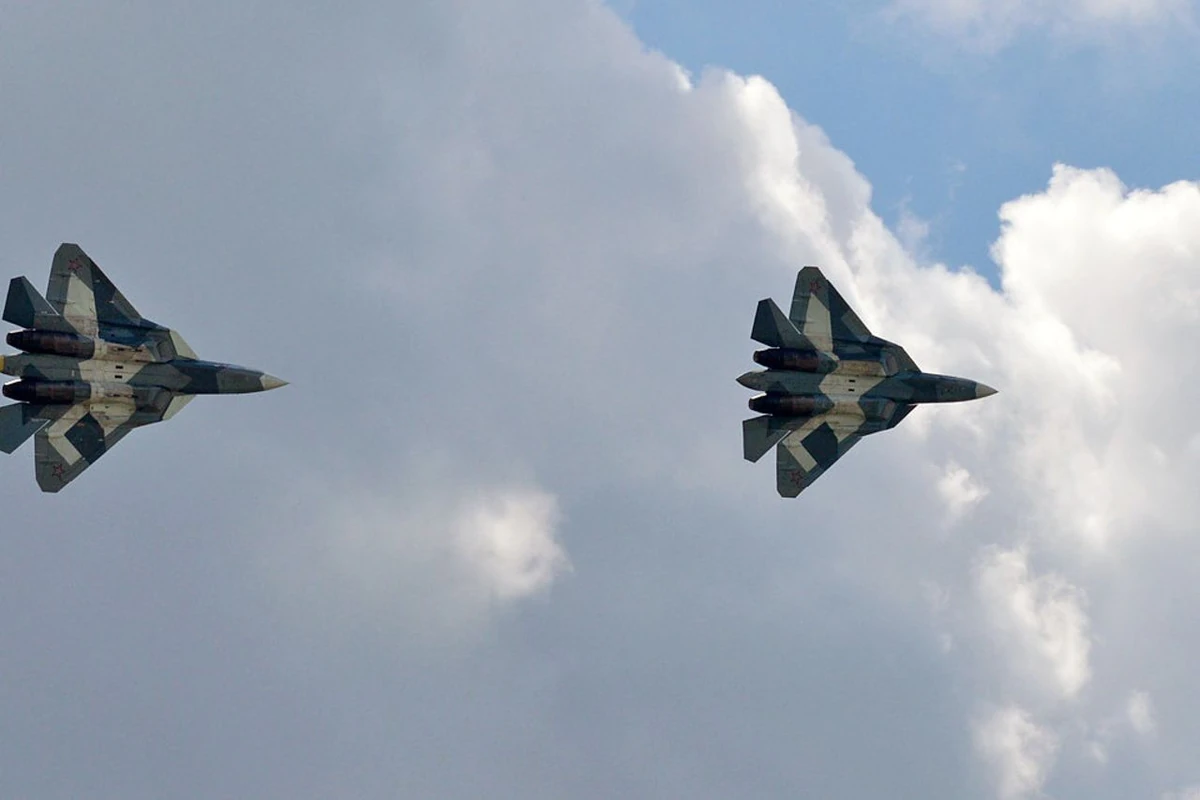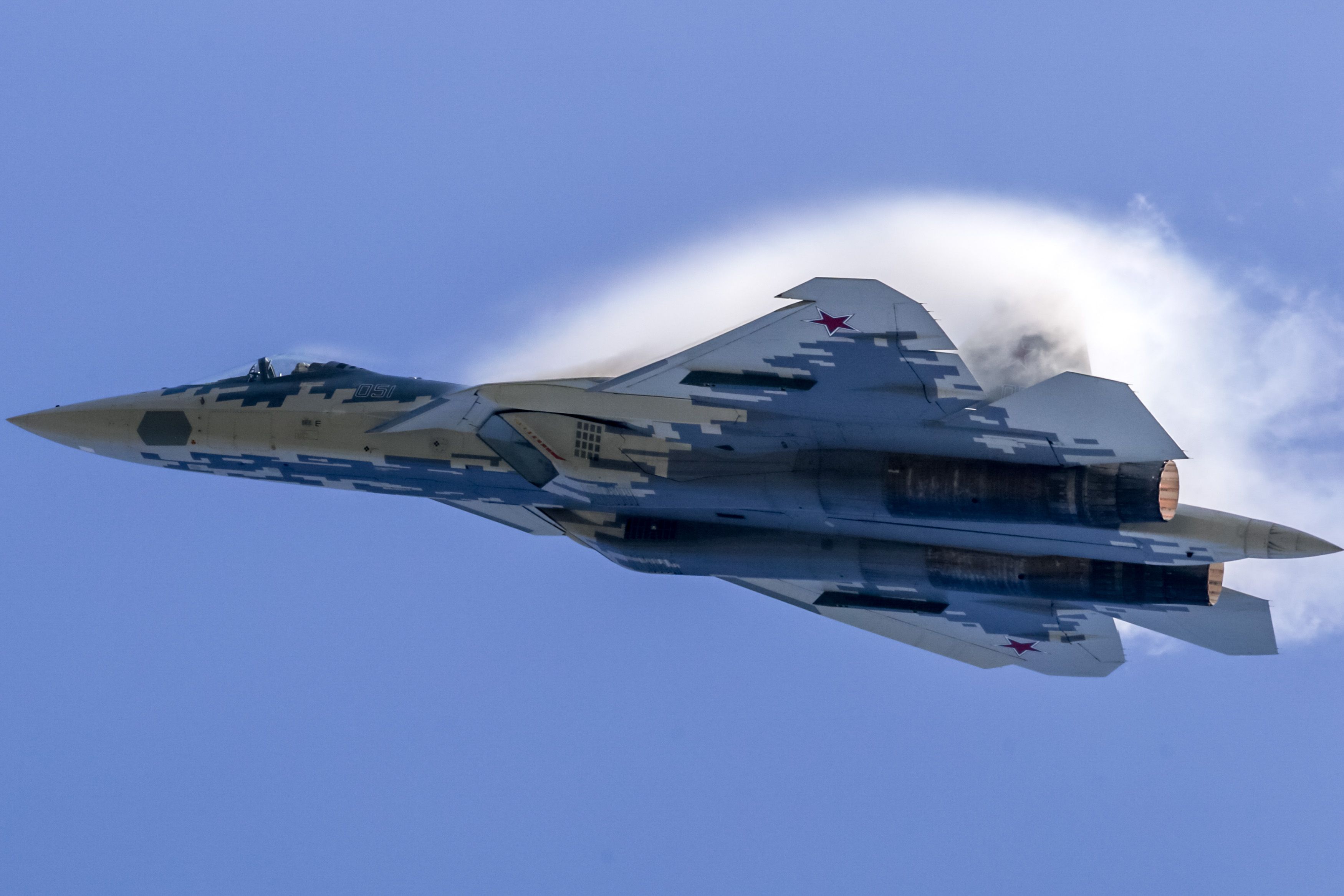Russia 5th Generation Fighter Jet - It is a product of Pak FA (Russian: пакzhizhi, abbreviation: перспективныйый), which came to market in 1999 as a more modern and affordable alternative to microfinance institutions (Mikoyan project 1.44/1.42). Its internal designation was T-50, Su-57 it was the first aircraft in service with the Russian military with integrated stealth technology and was to form the basis of a family of stealth fighters.
The Su-57 is a multi-role fighter capable of both air combat and land and sea attacks, featuring stealth, super maneuverability, super cruise, integrated avionics and a large internal payload capacity.
Russia 5th Generation Fighter Jet

The aircraft is intended to replace the MiG-29 and Su-27 in Russian service and is already on the market. The first prototype flew in 2010, but the program will see a long development due to various structural and technical problems encountered during testing, including the loss of the first production aircraft in a crash before delivery. After repeated delays, the first Su-57 enters service with the Russian Aerospace Forces (VKS).
Russia New Fighter Jet: Single Engine Stealth Fighter Details
In 1979, the Soviet Union outlined requirements for a next-generation fighter aircraft that would enter service in the 1990s. The program became I-90 (Russian: И-90, abbreviated: Истребитель 1990–х годов, literally "fighters of the 1990s") and called for fighters with solid ground, "multifunctional" (i.e. multipurpose) attack capability and will to replace the MiG -29 and Su-27 in tactical flight services. Two sub-projects were developed to meet these requirements: MFI (Russian: ♦, abbreviation: trunkated: electric: electric: electric'), conceptual work began in 1983.
Although Sukhoi was not a participant in the MFI, in 1983 Sukhoi began his own program to develop technologies for the next generation of fighter aircraft, culminating in the S-32 experimental aircraft with swept-forward wings, later renamed the S-37 and Su - 47 Due to lack of funds after the collapse of the Soviet Union, the MFI was repeatedly delayed, and the first flight of the MiG 1.44/1.42 prototype took place only in 2000, 9 years later than planned.
Eventually, due to high costs, MFI and LFI were discontinued while the Russian Defense Ministry began work on a new next-generation fighter program; In 1999 the ministry launched the PAK FA or I-21 program and in April 2001 announced the competition.
Due to Russia's financial difficulties, the program aims to contain costs by producing a single fifth-generation multi-role fighter to replace the Su-27 and MiG-29. Other cost saving measures include an integrated size between the Su-27 and MiG-29 and a much smaller normal takeoff weight of 000 lbs).
Checkmate: Russia's Newest, Most Advanced Fighter Jet
Sukhoi's approach to the PAK FA competition was very different from Mikoyan's; Since Mikoyan proposed three design bureaus (Mikoyan, Sukhoi and Yakovlev) to work together as a consortium, with the winning team leading the design work, Sukhoi's proposal sees itself as the lead designer starting and includes a joint working agreement covering the tire development and production cycle, from powertrain and avionics suppliers to research institutions. In addition, the two companies have different design concepts for the aircraft. Mikoyan's smaller and more affordable E-721, with a typical takeoff weight of 16-17 tons (35,000-37,000 lbs), is powered by two 10-11 tons (98.1-108 kN) Klimov VK-10M engines, 22,000-24,300 lbf) thrust. In comparison, Sukhoi's T-50 was relatively larger and more powerful, with a typical takeoff weight of 22–23 tons (49,000–51,000 lb) and powered by two Lyulka-Saturn AL-41F1 engines, each with a maximum thrust of 14, 5 tons (142 kN, 32,000 lbf) in class.
In April 2002, the Ministry of Defense chose Sukhoi over Mikoyan as the winner of the PAK FA competition and the chief design bureau for the new aircraft.
In addition to the merits of the proposal, the experience of Sukhoi in the 1990s was also taken into account, the successful development of various Su-27 derivatives and a large number of exports ensured its financial stability.

Mikoyan developed his E-721 as LMFS (Russian: ЛМИС, abbreviated: Лёгкий многофункциональный фронтовой самолёт, literally "Light Multifunctional Frontline Aircraft").
Russian Fighter Jets Still In The Game If Turkey Us F 16s Talks Fail
PAK FA's research and development program is called Stolitsa (Russian: Столица, literally meaning "capital"). In 2002, Alexander Davidko was chosen by Sukhoi to be the chief designer of the T-50.
The Novosibirsk Aircraft Production Association (NAPO) and the Komsomolsk-on-Amur Aircraft Production Association (KnAAZ) will manufacture the new multirole fighter aircraft, with KnAAZ performing final assembly in Komsomolsk-on-Amur.
After a competition in 2003, Tekhnokompleks Scientific and Production Cter, Ramskoye Instrument Building Design Bureau, Tikhomirov Scientific Research Institute of Instrument Design (NIIP), Ural Optical and Mechanical Plant (UOMZ) in Yekaterinburg, Nizhny Novgorod The Polet Corporation and the Moscow Institute from Central Scientific Research Radio Engineering were selected to develop the PAK FA's avionics suite. In April 2004, NPO Lyulka-Saturn (now NPO Saturn) was contracted as the contractor for the AL-41F1 rolling mill under the development name izdeliye 117.
Sukhoi used the existing airframe as a testbed for various subsystems and concepts; the Su-47 tested the internal weapons bay, and the Su-27M prototype was used as a testbed for the flight control system and engines.
China, Russia And Us In Fifth Gen Fighter Export War
To reduce development risks and share associated costs and narrow the gap with existing fourth-generation fighters, Sukhoi named T-10BM in Su-27 (Russian: БМ, abbreviated: большая модернизация, literally meaning "major modernization") . was eventually procured by the Russian Ministry of Defense in 2009 and entered service in 2014 as the Su-35S.
Concept design and design of the T-50 was completed in December 2004 and approved by the Department of Defense; government funding for the project began in 2005 and increased significantly in 2006 when detailed design was underway.
On August 8, 2007, Russian news agencies quoted the Commander-in-Chief of the Russian Air Force, Alexander Zelin, as saying that the development phase of the program was complete and construction of the first aircraft for flight tests would begin. with plans to build three airworthy prototypes of the T-50, was completed in 2009.

From the early stages of the PAK FA program, Russia has sought foreign partners for the project to increase its development funding and secure large export contracts.
Russia Developing Fifth Generation Lightweight Fighter Jet
On October 18, 2007, Russia and India signed a contract between Sukhoi and Hindustan Aeronautics Limited (HAL) to jointly develop a derivative of the PAK FA, known as the Fifth Generation Fighter Fighter (FGFA).
In September 2010, India and Russia agreed on the preliminary design contract, and the two countries will invest US$6 billion; the memorandum of understanding on the preliminary design was signed in December 2010, and the development of FGFA is expected to take 8-10 years.
However, in 2014 the IAF began to raise concerns about performance, cost and division of labour. India eventually withdrew from the partnership in 2018.
The T-50's first flight has been repeatedly delayed since early 2007 after unspecified technical problems were resolved. In August 2009, Alexander Zelin admitted that problems with the engine and technical research remained unresolved.
Russia Could Turn The Su 57 Into A Sixth Generation Fighter
On February 28, 2009, Sukhoi General Manager Mikhail Pogosyan announced that the airframe was almost complete and the first prototype should be ready by August 2009.
On August 20, 2009, Pogosyan stated that the first flight would be that year's d. Konstantin Makiko, deputy director of the Moscow-based Center for Strategy and Technology Analysis, said there are "delays in electric vehicles" and that the plane could make its maiden flight in January or February, adding that commercial production is 5 to 2 months would last. year time.
Flight testing was further delayed when Deputy Prime Minister Sergei Ivanov announced in December 2009 that the first tests would begin in 2010.

The first taxi test was successfully completed on December 24, 2009, and the first prototype T-50-1 completed its maiden flight on January 29, 2010.
Sketching The 6th Generation Fighter Jet
Piloted by Sukhoi test pilot Sergei Bogdan, the aircraft completed the 47-minute maiden flight at KnAAPO Zemgi Airfield in Russia's Far East.
Construction of the prototype will progress more slowly than originally planned, by one day in October 2013 the test program had completed more than 450 flights in five aircraft.
A total of t flying and three non-flying T-50 prototypes will be built for initial flight testing and government testing.
The original plan was to have up to six prototypes before series production began; However, tests showed that the first prototypes did not have sufficient service life due to early structural cracks developing in the airframe.
Russia And The Uae Will Develop A Fifth Generation Fighter Jet
The aircraft was subsequently structurally redesigned, with changes including increased use of composite materials, a strengthened fuselage to meet life cycle requirements, a longer tail 'spin' and a slightly larger wingspan; the sixth airworthy prototype was the first of the redesigned Tier 2 aircraft, therefore the first five prototypes are considered Tier 1 aircraft, requiring additional structural reinforcement to continue flight testing.
The last two flying prototypes were trials for a Su-57 production aircraft with full mission systems on board.
While the "Phase 2" structural redesign reduces weight gain for the required strength

Second degree assault washington state, 2nd degree assault sentence, 2nd degree aggravated assault, 2nd degree assault mn, 2nd degree assault, 2nd degree assault definition, 3rd degree assault washington state, 4th degree assault washington state, 2nd degree felony assault, 4th degree assault washington, what is assault 2nd degree, 2nd degree assault charges